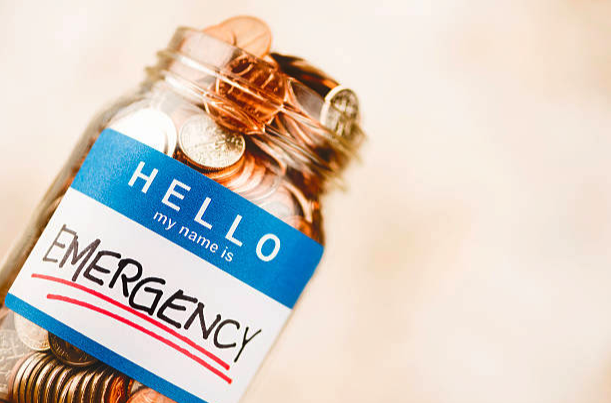How To Save Money For An Emergency Fund
Source: Catlane
Going through the pandemic has taught us that having a backup plan is essential in case something unexpected happens (again). And by backup plan, we mean having some extra funds stored in your account. But even after all that, emergencies can occur that are, more or less, out of our control—unexpected vehicle repair, illness, or job loss. That's why saving up for an emergency fund can help you prepare for whatever life hands us.
An emergency fund is money you've set aside for unplanned expenses and should cover at least three to six months' worth. If a sudden need for cash arises, your emergency fund will serve as your safety net when you need to make ends meet and from potential debts caused by credit cards and personal loans.
For many people, though, that can be an overwhelming or intimidating number. But it would help if you remembered that building an emergency fund takes a lot of discipline, sacrifice, and, most importantly, patience. If you're considering taking the path to financial freedom but unsure where to start, we're here to help. Here are some tips on how to save money for an emergency fund.
Breakdown Goals Into Smaller Steps
Building three to six months' worth of expenses takes a lot of time. In hopes of finishing the emergency funds as soon as possible, many feel discouraged after finding out that it was not as easy as it looked, which results in many people becoming frustrated and then giving up in the process.
However, breaking down your goals into smaller steps is a helpful way to start saving up without getting overwhelmed. Instead of aiming for three to six months' worth of expenses immediately, start doing one month or two weeks, whatever you think is doable for your income or situation.
Reaching your goal can motivate you to continue. Once you get the hang of it, you can increase your saving goals slowly until it becomes a habit. You'll soon realize that these small goals will propel you to move toward the bigger ones.
Set up a Budget and Review Them Regularly
Having a budget will help you determine where to allocate your money for savings and expenses. It is also helpful in managing your finances so you won't overspend. Be sure to review them regularly to see where your money is going and is still in line with your current financial situation.
Setting up a budget is also beneficial to know if you can still allocate more money into your savings. Review if you can still cut your budget on clothes, entertainment, and other personal care, and put the money towards your emergency fund. You can also choose alternatives to your grocery list that are less expensive (i.e., instead of buying meats, you can opt for vegetables). This way, you're not only supplementing your emergency fund but also helping to reduce your carbon footprint.
A budgeting app is a handy tool if you want to calculate your income and expenses, as well as track all your financial transactions.
Automate Your Savings Into A Separate Account
When starting to save up for your emergency fund, it is essential to have them separated from your daily spending account. Many banks offer direct deposits that automatically deposit your payroll into your savings or checking account. Direct deposits also allow you to deposit a specific amount of money to multiple bank accounts, so you can efficiently allocate your money to your emergency fund without mixing it up in your daily spending.
Before you open another savings account, keep an eye out for any fees you incur with a particular bank. It would be best to consider the interest rates and other account charges. Online banking is an excellent option for an emergency saving account as it offers higher yields and lower fees than physical banks.
By automating your savings into a separate account, you are doing yourself a favor by not constantly reminding yourself to put aside a good amount of your paycheck and free yourself from any temptations to spend on something unimportant. Out of sight, out of mind.
Put Unexpected Income Into Your Emergency Savings Account
Our cash flow is not stagnant. Sometimes there will be extra money that comes in the form of a tax refund, bonus, cash gifts, or rebates. If ever that happens, it would be best to use this money to supplement your emergency fund to help you reach your goal faster. You can allocate a portion to build your funds and use the remainder to treat yourself.
One example is when you've finished paying your credit card or any personal loans. Instead of using the money for unimportant spending, you can put the money towards your emergency funds.
Use Your Emergency Fund on Emergencies Only
When you notice that your emergency fund is increasing in size, it can be tempting to withdraw a small amount and promise to make it up on the next payday. But don't. They are called emergency funds for a reason, so touching the money when you're not supposed to would waste the effort, time, and sacrifices you exerted in building it.
Try to commit to leaving your emergency fund untouched. While that vacation seems fun, it can't pay your future medical bills or vehicle loans.
Don't Over-Save
An emergency fund is a cash account you can access quickly during unexpected events. Essentially, the recommendation is three to six months' worth of expenses. Once you achieve that, it's okay to stop. Since you are storing it in a bank, your money won't grow as fast as other types of investments. Try to start depositing your supposed savings in an account where it has the opportunity to grow on its own, such as retirement accounts or other investments.
Conclusion
Starting an emergency fund as early as now could help you achieve financial success. It eliminates the need for taking on credit card debt or personal loans when an unplanned situation arises. Sure, it can be daunting at first, but when you understand what it takes to start saving smartly, you'll see yourself handling a challenging situation before you know it.
This article was written by Bash Sarmiento

